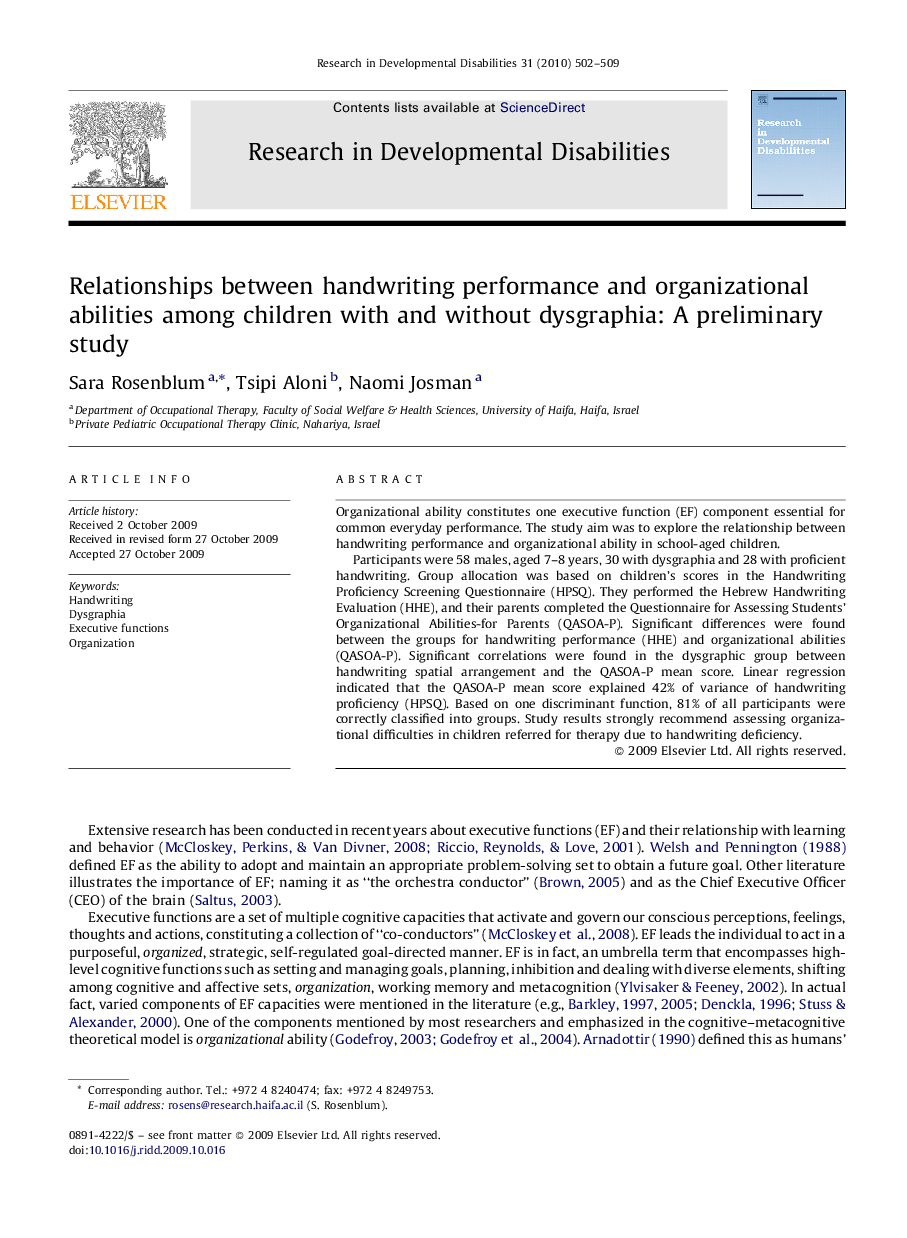| Article ID | Journal | Published Year | Pages | File Type |
|---|---|---|---|---|
| 372068 | Research in Developmental Disabilities | 2010 | 8 Pages |
Organizational ability constitutes one executive function (EF) component essential for common everyday performance. The study aim was to explore the relationship between handwriting performance and organizational ability in school-aged children.Participants were 58 males, aged 7–8 years, 30 with dysgraphia and 28 with proficient handwriting. Group allocation was based on children's scores in the Handwriting Proficiency Screening Questionnaire (HPSQ). They performed the Hebrew Handwriting Evaluation (HHE), and their parents completed the Questionnaire for Assessing Students’ Organizational Abilities-for Parents (QASOA-P). Significant differences were found between the groups for handwriting performance (HHE) and organizational abilities (QASOA-P). Significant correlations were found in the dysgraphic group between handwriting spatial arrangement and the QASOA-P mean score. Linear regression indicated that the QASOA-P mean score explained 42% of variance of handwriting proficiency (HPSQ). Based on one discriminant function, 81% of all participants were correctly classified into groups. Study results strongly recommend assessing organizational difficulties in children referred for therapy due to handwriting deficiency.
